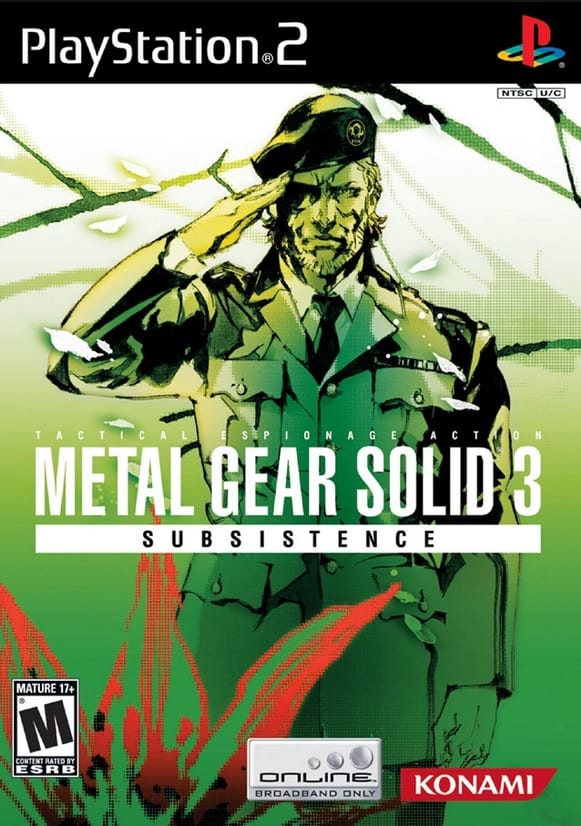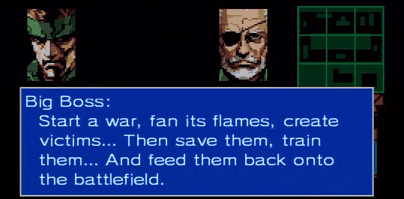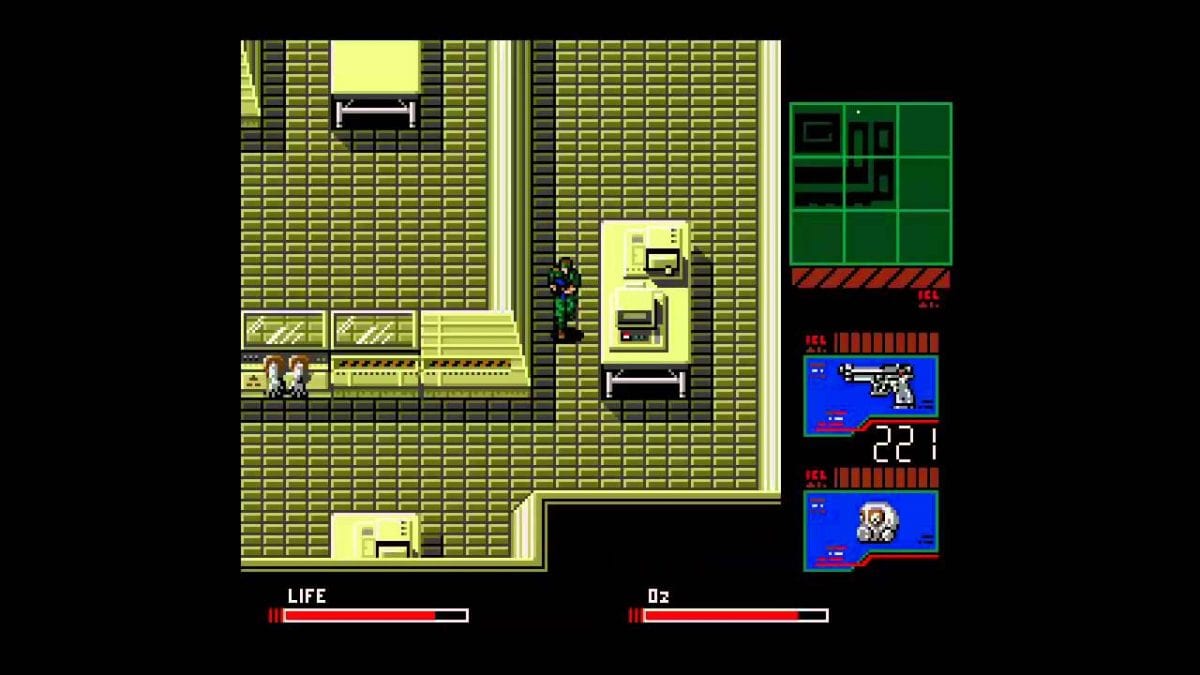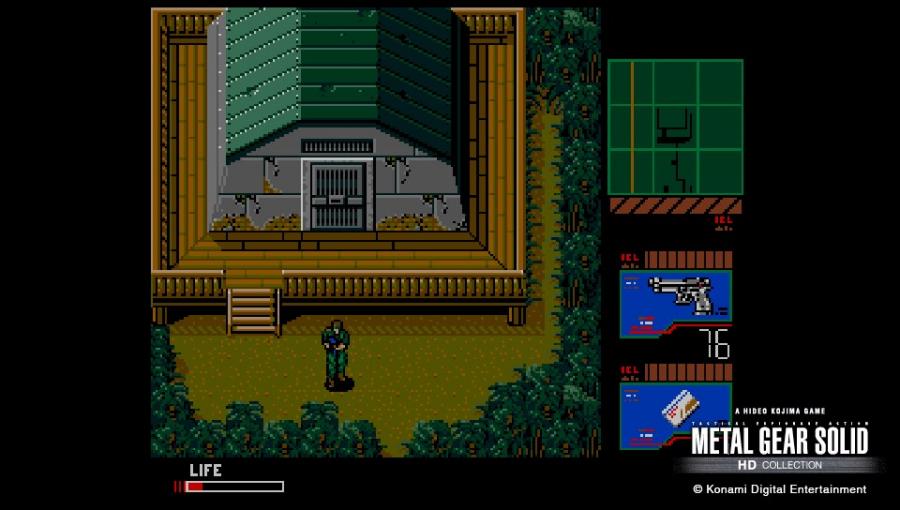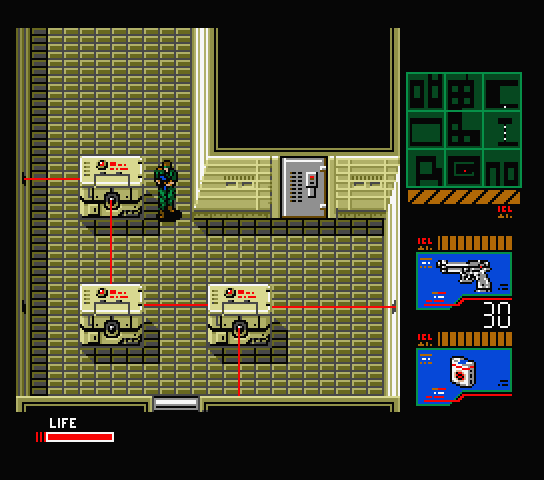Today marks the 30th anniversary of Hideo Kojima’s Metal Gear 2: Solid Snake. While many have never had the chance to play this 8-bit classic, it helped set the stage for everything you love more about the Metal Gear franchise….
My love for the Metal Gear franchise has been well documented over the years (and oft-lamented over the past half decade), but there haven’t been many opportunities to talk about one of my favorites in the series: Metal Gear 2: Solid Snake. In part because it is a much older game, but also because it originally only launched in Japan for the MSX2!
Fans of the first Metal Gear on NES in the West were stuck with the Snake’s Revenge sequel which was developed entirely without Kojima’s involvement. As such, players around the world weren’t able to get their hands on Metal Gear 2 until it came bundled with the Metal Gear Solid 3 re-release, Subsistence; a solid 15 years after its release.
This is when I sat down to play it, sitting in my cramped college apartment with an old-school box styled big screen TV that sat only about six feet from my couch. Having played through all the other games up to that point, I was eager to dive into the one I had missed. To be honest, the inclusion of Metal Gear 2 was the primary reason for me picking up the Subsistence release!
I’ve always been a fan of older titles, frequently going back to replay 8-bit games even as the technology leaped far ahead. As such, I was expecting a title that was relatively simple…What I got was a game filled with deep mechanics and a surprisingly poignant story.
In short, I was blown away.
A Story Beyond It’s Time
The game itself follows a story that should be instantly familiar to fans. A few years following the story of the first game, Solid Snake is tasked with infiltrating an enemy stronghold in an isolated location (Zanzibar Land!) to rescue a kidnapped scientist, as well as destroy a new Metal Gear device. If this sounds familiar, so will many other things, in fact, it’s quite obvious how much this specific game had an impact on the franchise in general, even into the final game, The Phantom Pain.
The game introduced a complex storyline, the kind of which you’d only get with RPGs of the era (or found in supplemental manual material for action games), that delved deep into themes on military escalation, nuclear proliferation, and the mental aspects of warfare on soldiers. Within a short amount of time, I found myself hooked on the game. This wasn’t the simplified game I was expecting, but rather the thought-provoking story with engaging characters many come to associate with the series.
While these high concepts feel like old hat now to fans of the franchise, it’s crazy to think about this level of storytelling from an 8-bit title made in the 90s. This just wasn’t the norm and when you combine it with intriguing gameplay elements, deep puzzles, and a plenty of thrilling action, there’s a lot to love!
Having played the three Metal Gear Solid games before diving into this one, I was thrilled to finally encounter certain characters and stories mentioned in previous titles. As I made my way through the game, it became evident just how much influence Solid Snake had the story going forward. The context provided during encounters with Gray Fox offered a deeper perspective on the Cyborg ninja we face in MGS1. Not to mention dealing with Big Boss as the ultimate enemy this time around.
Hell, the whole premise of the game (and Zanzibar Land itself) is referenced multiple times in MGS1 and even within MGS3 which takes place in the timeline prior to the events of Metal Gear 2. It also gets some love in Metal Gear Solid 4: Guns of the Patriots and my playthrough of the old title before that game’s release offered a deeper connection to those aspects in the story I otherwise would have missed.
Genre-Defining Mechanics
The depth of the Metal Gear 2 story (and it’s far reaching influence) isn’t the only impressive aspect of the game. The gameplay introduced is well beyond anything I expected. The original Metal Gear played with the idea of stealth in gaming with some fun things, but at its core, still played like an action title.
Solid Snake took all of it to the next level. On top of introducing all new mechanics like crouching down, and crawling under objects to hide, sound became a major factor in how you played. Noises you make in the game now have consequences. From firing a weapon without a suppressor, or knocking on a wall, any ill timed noise can alert enemies to your presence. Hell, the terrain you walk on can also cause noises to give away your location!
The Enemy AI was significantly upgraded, not only increasing their field of vision, but their freedom to explore. Previously, if you were discovered, enemies were limited to their single screen and scrolling your character into the next screen was enough to get them off your back. Solid Snake gave us the (now iconic) “Alert” system with the timer counting down when you’re discovered. Only by hiding (successfully) can you get the timer to run down and send the enemies back to their posts.
This is all old hat for fans of the franchise, but imagine trying these things out 30 years ago. It was almost entirely unheard of and offered a layer of strategy to gameplay many of us wouldn’t see again until the PlayStation era.
There are many more gameplay additions in Metal Gear 2 and I could sit here and list them out all day. Suffice it to say that just about every major gameplay element you’ve come to associate with the Metal Gear franchise (even the goofy fourth wall breaking) has its roots in Solid Snake.
More than just a stepping stone in the series, it served as a leap in what stories could be told, even during the 8-bit era, through gaming. I have no doubt, were the series still going on today, we’d continue to see the influence of Metal Gear 2 within it. Sadly, all we have now are its legacies. Aside from emulators, or still having a PS3/Xbox 360 and the HD Collection, there aren’t many easy ways to play this classic title.
If you find the opportunity, though, you should absolutely give it a go. It’s aged incredibly well over the past 30 years, with gameplay that’s simple by today’s standards, still a ridiculous amount of fun. It still touches on some poignant themes and feels relevant to this day.

